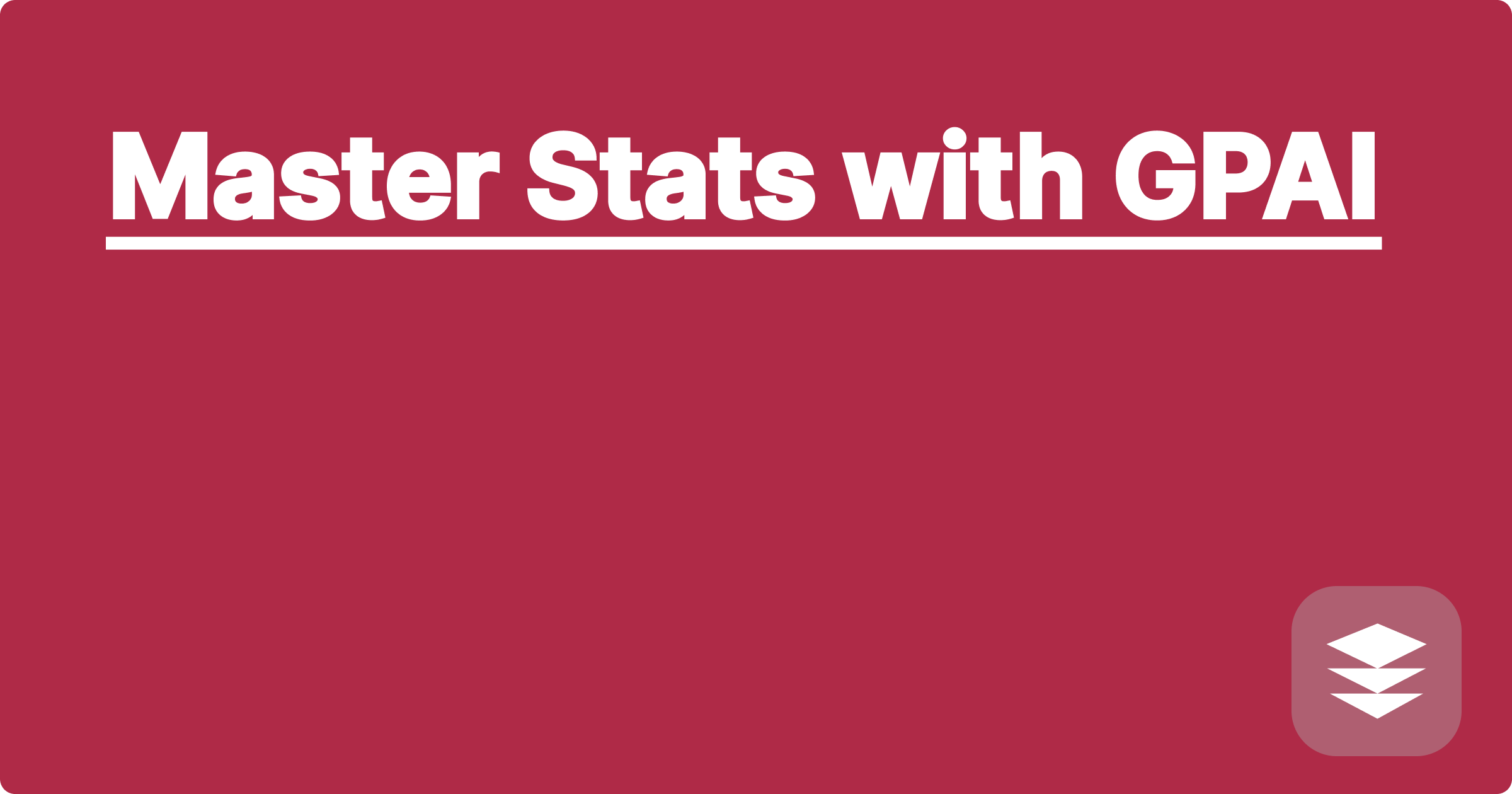
STEM fields are notorious for their rigorous coursework, particularly in statistically intensive subjects. Students and researchers often find themselves struggling to grasp complex concepts, manage large datasets, and prepare effectively for exams, especially when time is limited. Artificial intelligence offers a powerful new set of tools to address these challenges and enhance learning and research outcomes. Generative Pre-trained Transformer (GPT) models, in particular, can be leveraged to understand intricate statistical concepts, streamline data analysis, and optimize exam preparation strategies.
This is particularly relevant for STEM students facing the pressure of exams and deadlines. Mastering statistics is crucial for success in many STEM disciplines, and AI can provide personalized support, tailored to individual learning styles and needs. By understanding how to effectively utilize these tools, students can gain a significant advantage in their studies and future research endeavors. This article will explore how Generative Pre-trained AI (GPAI) can be a game-changer in mastering statistics, improving comprehension, and ultimately boosting academic performance.
Statistics forms the bedrock of many scientific disciplines. It provides the framework for designing experiments, analyzing data, and drawing meaningful conclusions. However, the inherent complexity of statistical concepts, ranging from probability distributions to hypothesis testing, can pose a significant hurdle for many students. Furthermore, the sheer volume of data encountered in modern research often necessitates the use of sophisticated statistical software and programming languages, adding another layer of complexity. Traditional learning methods, like textbooks and lectures, can sometimes fall short in providing the individualized support and practical application that many students require to truly master these concepts. This gap between the complexity of the subject matter and the limitations of traditional learning approaches can lead to frustration, decreased motivation, and ultimately, suboptimal academic performance.
Generative Pre-trained AI (GPAI) models like ChatGPT, Claude, and Wolfram Alpha offer a revolutionary approach to learning and applying statistics. These tools can provide on-demand explanations of complex concepts, generate practice problems, and even assist with data analysis. For example, if a student is struggling to understand the concept of a confidence interval, they can ask a GPAI model to explain it in simpler terms, provide examples, and even generate practice problems with varying levels of difficulty. Furthermore, these AI tools can be integrated with existing statistical software packages to streamline data analysis workflows. By leveraging the power of natural language processing, GPAI models can bridge the gap between theoretical understanding and practical application, enabling students to develop a deeper and more intuitive grasp of statistical concepts.
Begin by clearly defining the statistical concept you want to learn or the problem you need to solve. This might involve identifying a specific topic from your textbook, a challenging homework problem, or a research question related to your project. Next, formulate a clear and concise query for the GPAI model. For example, if you're struggling with hypothesis testing, you might ask the model to "explain the difference between a null hypothesis and an alternative hypothesis" or "generate a practice problem involving a one-tailed t-test." After receiving the AI's response, carefully review the explanation or solution provided. If anything is unclear, don't hesitate to ask follow-up questions or request further clarification. Finally, actively engage with the material by working through the practice problems, applying the concepts to real-world examples, and discussing your understanding with peers or instructors. This iterative process of querying, reviewing, and applying will solidify your understanding and build your statistical skills.
Consider a scenario where you need to calculate the correlation coefficient between two variables, height and weight, for a sample population. You can input the data into Wolfram Alpha or a similar AI tool and ask it to calculate the correlation coefficient. The tool will not only provide the numerical value but also offer visualizations and interpretations of the result. Another example involves understanding the concept of regression analysis. You can ask ChatGPT to explain the different types of regression models, such as linear and logistic regression, and provide examples of when each model is appropriate. You can even request the AI to generate sample code in Python or R to perform regression analysis on a dataset. These practical applications demonstrate the versatility of GPAI in tackling diverse statistical challenges.
To maximize the benefits of GPAI in your STEM studies, focus on developing effective questioning strategies. Learning how to ask clear and specific questions will yield more accurate and relevant responses from the AI. It's also crucial to cultivate a critical mindset and not blindly accept the information provided by the AI. Always verify the information with reliable sources and consult with your instructors when necessary. Furthermore, integrate GPAI into your existing study routine, using it as a supplement to, not a replacement for, traditional learning methods. By combining the strengths of AI with the guidance of your instructors and the structure of your coursework, you can create a powerful learning environment that optimizes your academic performance.
In conclusion, GPAI offers a transformative approach to mastering statistics in STEM education and research. By understanding how to effectively utilize these powerful tools, students and researchers can overcome the challenges posed by complex statistical concepts and large datasets. Embracing these AI-powered solutions will not only enhance understanding and improve academic performance but also prepare students for the data-driven world of future scientific advancements. Start exploring these tools today and unlock the potential of AI to revolutionize your statistical learning journey.
GPAI: Solve Physics HW Faster!
GPAI: Engineering Data Analysis